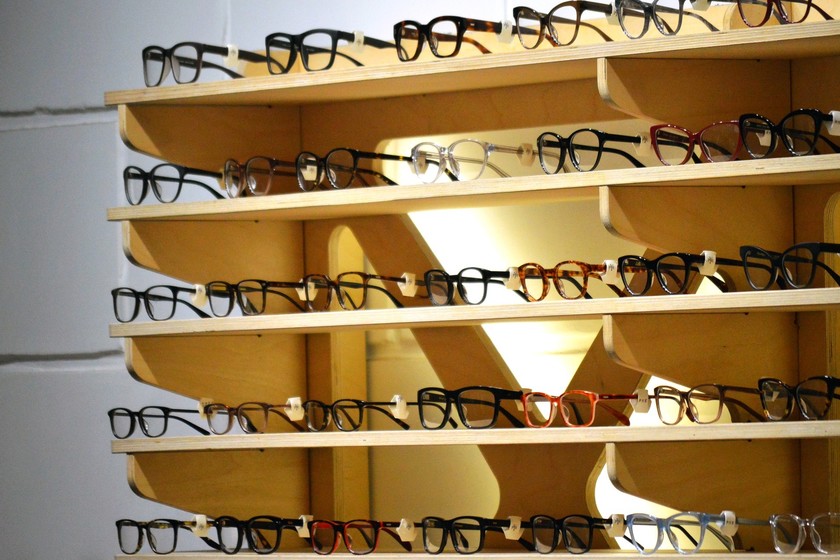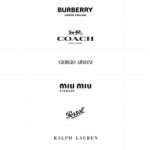


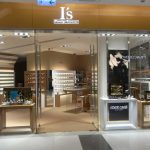



Someone passes me a link to Aliexpress. “Have you seen this?” he says excitedly. There are Chinese sellers who offer to make you prescription glasses, and they not only ask for the diopters, but also the index of the lens, pupillary distance, the axis in case of astigmatism and several other options. At least 25 people claim to have received perfect glasses to their measurements. I do a purchase simulation and the Final price of glasses for me, lenses included, is 50 eurosThe ones I bought three years ago at the optician’s cost me 330.
Glasses are a product of fashion and personal style, but above all, they are a health product. That is why very few people trust online shopping to ensure the safety of their retinas, much less on sites without controls or guarantees for the consumer. But every time it is time to go to the checkout, every three or four years, we opticians cannot help but ask ourselves:I’m really paying a fair price for a piece of plastic or metal and a pair of magnifying glasses?
“At least 500 million people are wearing our glasses right now,” says Andrea Guerra, CEO of Luxottica until 2014 in an interview for the American program 60 Minutes in 2012. According to an article this month for the LA Times, the proportion of four-eyes wearing their products has only increased. “There is no competition in this industry anymore, it’s over. Luxottica has bought everyone. They set the prices they want,” says Charles Dahan, a former entrepreneur in the optical goods business, a sector that moves 100 billion euros worldwide every year.
The “Made in Italy” monopoly
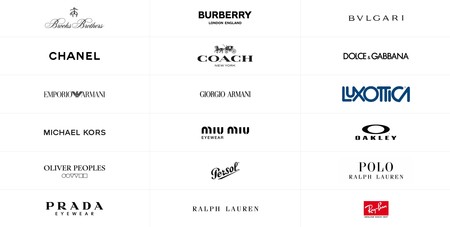
 Some of Luxottica’s brands.
Some of Luxottica’s brands.
Luxottica currently owns the following brands:
Armani, Brooks Brothers, Burberry, Chanel, Coach, DKNY, Dolce & Gabbana, Michael Kors, Oakley, Oliver Peoples, Persol, Polo Ralph Lauren, Ray-Ban, Tiffany, Valentino, Vogue, Versace.
All the mouldings of these firms are manufactured in Longarone, a town of 4,000 inhabitants 100 kilometres from Venice. According to Forbes, 80% of the luxury brands on the market are controlled by Luxottica. It is clear that this firm is the most powerful agent, but it coexists with Safilo, Marcolin and De RigoIf we add the 170 medium-sized companies and 650 artisanal companies that also operate in the valley, we have the complete picture: Longarone is the world mecca of eyewear.
While many of us suspect that with the frames you are paying purely for the brand (they themselves admit that, of the 160 or 230 euros that a Ray Ban frame costs, they cost five to manufacture it), we want to believe that with the lenses it is another matter. They are customized pieces with dozens of variables, in many cases with multiple vision adjustments in a single magnifying glass.
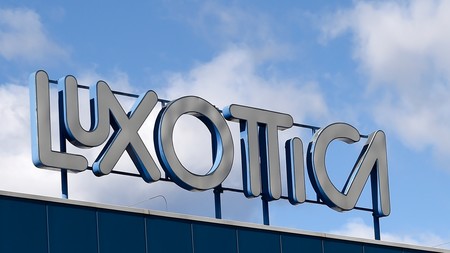

Well, Luxottica has also been buying up various lens producers, as well as their manufacturing tools. As Dean Butler, Dahan’s colleague at LensCrafters (the leading manufacturer and retailer of eyewear in the United States until 1995), explains, before selling his company They could produce the lenses for between $5 and $15.. Now LensCrafters sells them for 100 or more.
“Crystals? You can buy top-quality crystals for a dollar each, and yet those same crystals are being sold in the United States for $800. It’s ridiculous, it’s a complete rip-off,” Butler says.
Here comes the trick: in January 2017, the European Union gave the green light to a merger between Luxottica and Essilor. The former, with its licensing muscle. The latter, French, being the largest glass manufacturer in the world which nobody can cough at: they alone dominate 45% of the crystals produced worldwide.

The sum of both companies included 49 billion euros of those 100 billion as we said at the beginning. Approximately 2.5 billion humans need glasses, and EssilorLuxottica is already manufacturing 1 billion of them every year, specifically, the 1 billion most expensive pairs of glasses.
A 2014 report by market analysis firm Euromonitor already warned of the stagnation of supply in the sectordenouncing that, according to its estimates, the final manufacturing price of a pair of glasses cannot exceed 25 and 50 dollars; but 2014 was a sweet moment, even without the merger between these two giants.
Little by little, the multinational has been taking over more parts of the production and distribution chain, from designers, engineers, factories and warehouses on four continents to points of sale, as they also own some of the most popular chains in each region: they have more than 9,000 stores around the world.
Glasses are not (and are) just any product
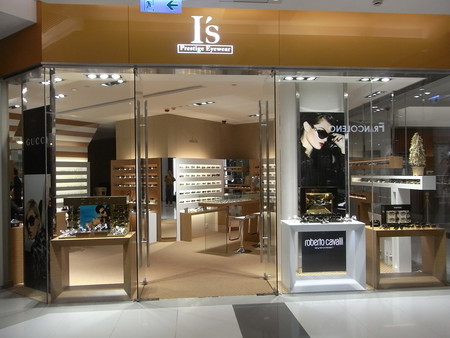

It is common to find independent opticians, new manufacturers and brands trying to escape the need to do business with them, but they can suffer any of the following consequences: They are left with limited room for manoeuvre by not having several of the processing points, the brand is sunk so that it can then be bought or, when they are large enough, they run the risk of being bought.
For many, the activity of this company requires the intervention of the States, which apply some kind of antitrust law. While their activity in the fashion sector may be legitimate to a certain extent (no one forces you to buy a pair of Ray Ban prescription sunglasses for 500 euros), the problem is precisely their ubiquity also for those who want to treat a medical defect. Glasses are an accessory, but also a medical prosthesis.
The former LensCrafters businessmen remember EpiPen, the life-saving remedy for allergy sufferers whose price rose by 400% overnight due to monopolistic control. They fear that the conglomerate could influence supply in the same way.


However, for now The influence of EssilorLuxottica is not so clear. There are still cheap frame options, and lens prices have not become more expensive (although with the multiplication of lens options there are now much more expensive lenses than before). The general feeling, without any studies, is that glasses cost, in proportion, the same now as 20 years ago: about 250 euros on average for a pair of glasses, with the difference that in Spain we change them approximately every six years and in the United States they do it every one or two years.
Of course, if we compare the price of other consumer goods that have become much cheaper to produce, such as clothing, televisions and smartphones, the price should have fallen by a large percentage, but it hasn’t. If we believe the analysts’ statements, the net profit for glasses sold for this conglomerate is 300%, which is still a very high margin (an iPhone, for example, has 42%).
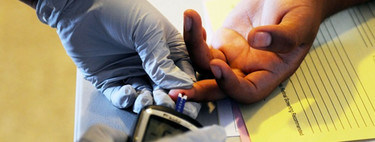
In any case, the future looks positive for business: life expectancy is increasing and the Western population is ageing, white-collar jobs and the ubiquity of screens are spreading myopia, and Latin and Asian countries are getting into the habit of buying glasses: while in the 1950s, 10 to 20% of Chinese said they needed help to see, among today’s teenagers the percentage is 95%. EssilorLuxottica is, of course, preparing for this.
So what options do we have as consumers?
The Internet, of course. Brave people who dare to buy online and try to help shift the weight of the main competitors. But we return to the beginning: as independent companies like Lord Wilmore lament, prescription glasses are a medical product and are subject to special legislationwhich makes them more vulnerable to complaints for online sales.
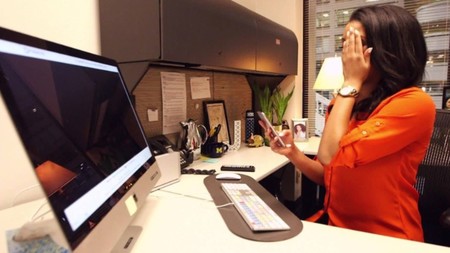

What most of these companies do is advertise the website as just another sales channel, maintaining at least one physical locationalthough in practice they sell mostly online. These businesses won a battle in 2010: a company sued an online store for selling contact lenses over the Internet. They ended up in court.
When Europe reviewed the case, it determined that online sales could not be banned, establishing a jurisprudence that clarifies that, although the sale of medical goods should not be allowed without special protection, online sales cannot be banned either, since it goes against the European Union e-commerce rules.
For this reason, there are also more and more tools and websites concerned with online eye measurements, a field that is still in the experimental phase but which could help to achieve more equal access to glasses. We will see if, in the future, cheap magnifying glasses manage to gain ground on the Italians.

